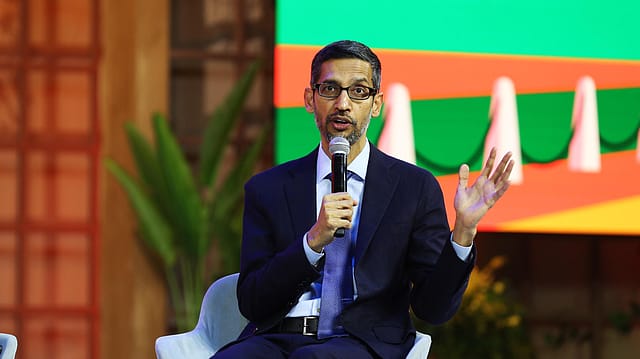Explained: What is Google's Willow and can it crack Bitcoin
ADVERTISEMENT

Google has announced to overcome a key challenge in quantum computing, with its new generation Willow (100 qubits) chip -- that can reduce errors "exponentially" and has cracked a key challenge in quantum error correction that the field has pursued for almost 30 years.
Google CEO Sundar Pichai says 'Willow' performed a standard benchmark computation in under five minutes that would take one of today’s fastest supercomputers 10 septillion years — a number that vastly exceeds the age of the universe.
"Introducing Willow, our new state-of-the-art quantum computing chip with a breakthrough that can reduce errors exponentially as we scale up using more qubits, cracking a 30-year challenge in the field. In benchmark tests, Willow solved a standard computation in <5 mins that would take a leading supercomputer over 10^25 years, far beyond the age of the universe(!)," says Pichai.
The Google CEO dubs Willow as an important step in the company's journey to build a useful quantum computer with practical applications in areas like drug discovery, fusion energy, battery design + more.
January 2026
Netflix, which has been in India for a decade, has successfully struck a balance between high-class premium content and pricing that attracts a range of customers. Find out how the U.S. streaming giant evolved in India, plus an exclusive interview with CEO Ted Sarandos. Also read about the Best Investments for 2026, and how rising growth and easing inflation will come in handy for finance minister Nirmala Sitharaman as she prepares Budget 2026.
Reacting to Google's announcement, some users said Google's announcements could mean the end of the world's biggest cryptocurrency Bitcoin, as the quantum computer could eventually, in future, break its cryptographic security. However, others say it's not possible within the next decade, at least, as despite advancements Google or any other supercomputer is still far behind. Many opine that even when such technology is developed, Bitcoin and other cryptocurrencies may adopt quantum-resistant algorithms well before any practical threat materialises, ensuring continued security for blockchain systems.
Estimates indicate that compromising Bitcoin's encryption would necessitate a quantum computer with approximately 13 million qubits to achieve decryption within a 24-hour period. "In contrast, Google's Willow chip, while a significant advancement, comprises 105 qubits. We have a ways to go... Nonetheless, this is a remarkable leap forward in quantum computing," says Kevin Rose, partner at U.S.-based True Ventures.
Notably, both IBM and Microsoft are also working on quantum computing projects. Google's Willow has reached a new milestone though it has no commercial applications as yet. But with further advancements, Google aims to solve key problems in areas such as AI, medicine, and battery chemistry.
All you need to know about Google's Willow
1) Google's Willow chip project started in 2012 with a vision to build a large-scale quantum computer harnessing quantum mechanics to advance scientific discovery, develop helpful applications, and tackle society's greatest challenges.
2) Google says Willow achieved exponential quantum error correction. "The more qubits we use in Willow, the more we reduce errors, and the more quantum the system becomes. We tested larger arrays of physical qubits, scaling up from a 3x3 grid to 5x5 and 7x7, cutting the error rate in half each time," says Hartmut Neven, founder and lead, Google Quantum AI.
3) This means Google achieved an exponential reduction in error rate, known as “below threshold” — driving errors down while scaling up qubits.
4) With Willow, Google achieved scientific firsts: real-time error correction on a superconducting quantum system, crucial for useful computation, and "beyond breakeven" demonstration where arrays of qubits have longer lifetimes than individual qubits.
5) Willow performed a computation in under five minutes that would take today’s fastest supercomputers 10 septillion years. "It lends credence to the notion that quantum computation occurs in many parallel universes," says Neven.
6) Willow's performance sets benchmarks for quantum error correction and random circuit sampling. "Such benchmarks measure overall chip performance," says Neven.
7) Willow’s next challenge is to show a "useful, beyond-classical" computation relevant to real-world applications. Google aims to step into algorithms beyond classical computing for commercially relevant problems.
8) Neven says quantum computing will transform technology, and advanced AI will benefit significantly. "Future game-changing applications won’t be feasible on classical computers; they’re waiting to be unlocked with quantum computing."
